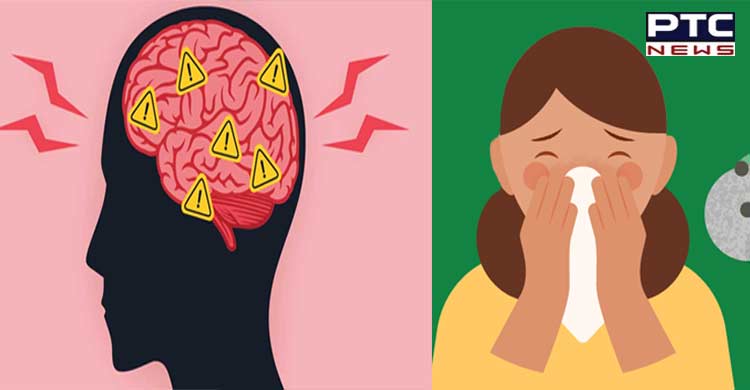Washington, June 13: A small population of neurons near the base of the brain can induce symptoms of sickness, including fever, appetite loss, and warm-seeking behaviour, says a study.

When someone gets an infection, most people think it's the immune system kicking into gear when they feel some of the body's natural defenses such as fever, chills, or fatigue. What most people don't know is that it's actually the brain behind all of this.
Here's what happens: The nervous system talks to the immune system to figure out that the body has an infection and then orchestrates a series of behavioral and physiological alterations that manifest as the unpleasant symptoms of sickness.
For neuroscientists, long-standing questions have been: How and where does this happens in the brain? Harvard researchers from the labs of Catherine Dulac and Xiaowei Zhuang sought the answer in the brains of mice.
Also Read | Centre unveils new armed forces recruitment plan 'Agnipath'
In a new study published in Nature, the researchers and their collaborators describe finding a small population of neurons near the base of the brain that can induce symptoms of sickness, including fever, appetite loss, and warm seeking behavior.
The neurons, which have not been previously described, are found in an area of the hypothalamus, a part of the brain known for controlling key homeostatic functions that keep the body in a balanced, healthy state. The researchers found these neurons have receptors that are capable of directly detecting molecular signals coming from the immune system, an ability most neurons don't have.
"It was important for us to establish this general principle that the brain can even sense these immune states," said Jessica Osterhout, a postdoctoral researcher in the Dulac Lab and the study's lead author. "This was poorly understood before."
The researchers found that the key area of the hypothalamus is located right next to a permeable section of the brain called the blood-brain barrier, which helps circulates blood to the brain.
"What's happening is that the cells of the blood-brain barrier that are in contact with the blood and with the peripheral immune system get activated and these non-neuronal cells secrete cytokines and chemokines that, in turn, activate the population of neurons that we found," said Dulac, Lee and Ezpeleta Professor of Arts and Sciences and Higgins Professor of Molecular and Cellular Biology.
Also Read | India logs 6,594 new Covid-19 cases in 24 hours
The hope is that scientists can one day use the knowledge from how this mechanism works to target the process in humans to reverse it when it becomes aversive to someone's health.
A fever, for instance, is typically a healthy reaction that helps eliminate a pathogen. But when it gets too high, it can also become dangerous. The same can be said for loss of appetite or a lowered thirst, which can, at first, be beneficial. But a sustained lack of nutrients or hydration then start to impede recovery.
"If we know how it works, perhaps we can help patients who have difficulty with these kinds of symptoms, like chemo patients or cancer patients, for example, who have a very low appetite but there's really nothing we can do for them," Osterhout said.
The work originally started as an effort to look at what is known as the fever effect in autism patients. It's a phenomenon where autistic patients have a reduction in autistic symptoms when the patient have symptoms of an infection like a fever. The goal was to find the neurons that generate fever and link them to the neurons that are involved with social behavior.
Instead, Osterhout found many populations of neurons that are activated when an animal is sick. She zeroed in on about 1,000 neurons in ventral medial preoptic area of the hypothalamus because of their location next to the blood-brain barrier.
-PTC News












































